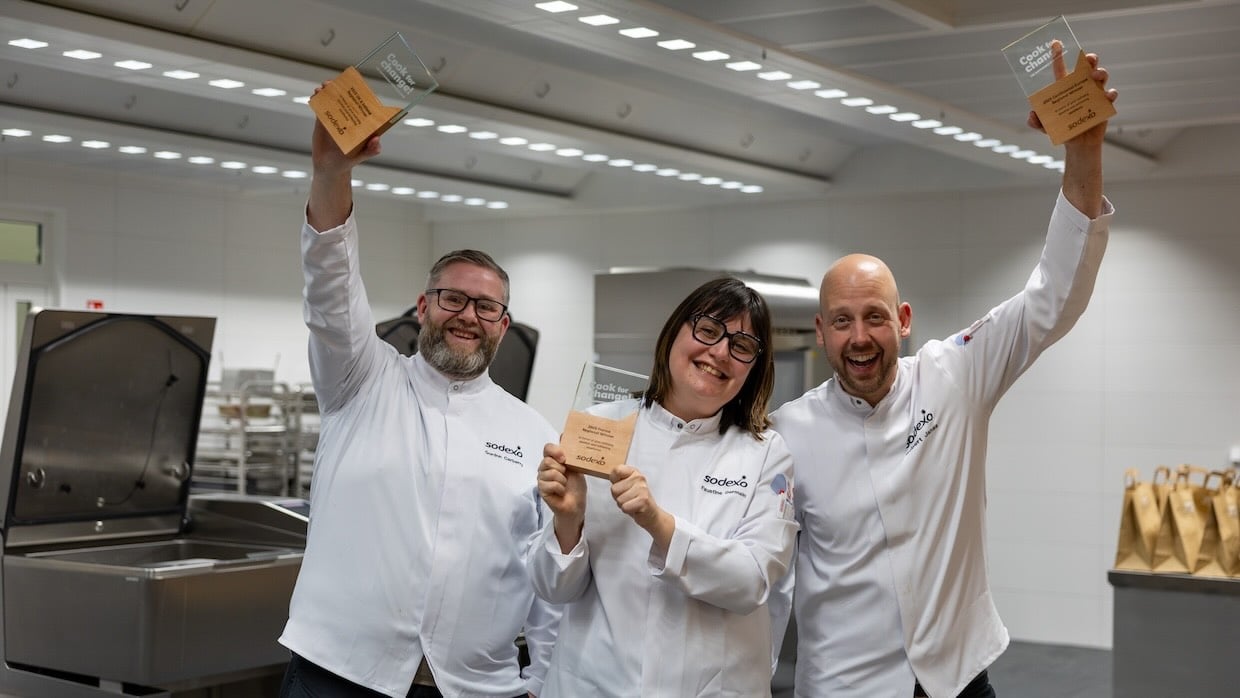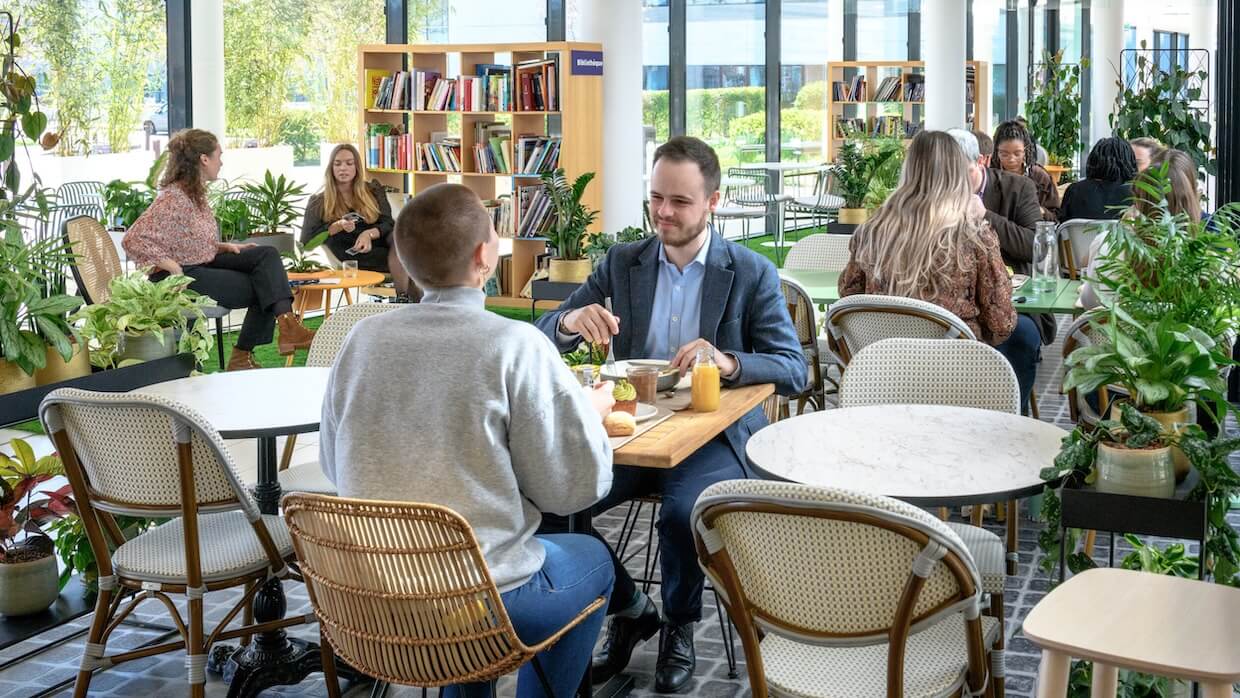Food
The sustainable chef superstars fuelling your day

Individually, the events of 2020 have resulted in manageable changes across numerous parts of daily life. However, one of the biggest challenges we all face is the compound impact of these individual pressures on overall wellbeing.
At Sodexo, we’ve always been focused on quality of life, going beyond the workplace to support the wider wellbeing of our clients and their employees. This approach considers all the touchpoints that help people feel confident, capable and fulfilled, delivering a positive impact on productivity and performance.
Now, we are in the midst of a worklife evolution: a reinvention of how we live and work, accelerated by the pandemic but forecasted for decades. To better support our clients, we’re improving our understanding of what the world of work looks like and how it will change in the coming months.
Based on data from Harris Interactive, our new eBook is a comprehensive look at the sentiment of public and private sector employees during the course of COVID-19. It’s a revealing look at the impact of the pandemic on wellbeing – and why the stakes are higher than ever before.
Even with impeccable discipline and organisation, working at home naturally blurs the line between work and everything else. However, this fluidity isn’t necessarily a bad thing.
According to the CIPD, 61% of employees report an improvement in the work-life balance as the result of homeworking. Meanwhile, 28% of employers report improved employee productivity.
Increased rates of remote working bring advantages for employees and employers, even where they can’t replicate the social buzz of an office. However, this blurred line presents a significant challenge for employee wellbeing.
Working from home itself needn’t take a lasting toll on wellbeing. The issue is that, if mental wellbeing falls for any reason, it is harder to ‘switch off’ or separate work stress from time at home. That’s why it is important that we all pay extra attention to employee wellbeing in this uncharted territory.
As a direct result of the pandemic, employees have all tasted the reality of working at home. According to our study, responses to this were mixed and some found the transition more challenging than others.
However, 79% of respondents who worked from home because of the pandemic said that they wanted the option to continue working remotely. Having seen the strengths and weaknesses of home working, employees want the opportunity to decide which is best on any given day and for any given task.
Even where the experience itself of has been challenging, the option of remote working is valued.
We are all moving to a blended approach to work: partly at home, partly in the office and potentially in other environments like coworking spaces. According to Fortune, remote working is a great fit for ‘standardized tasks’, but not for the ‘spark’ of human connection.
Moving forward, organisations will need to offer the right way of working for the right moment, not a one-size-fits-all approach.
While the line between personal and professional time has softened, the line between personal and professional experience has all but disappeared.
This aligns with what we already know about overall employee wellbeing – it’s not created in the office, or in the confines of traditional working hours. It is the product of every touchpoint and every moment.
What the pandemic has done is bring this interplay to the attention of employees themselves. According to our research, 81% of employees are positive about getting mental wellbeing support from their employer or even think it falls under its responsibility. They understand the importance of wellbeing as they navigate the year’s numerous challenges, but don’t expect to do it alone.
Protecting the wellbeing of the workforce is essential for a healthy, productive organisation.
The workforce believes that employers should play active roles in their wellbeing. However, they do so without necessarily having made their own changes or developed their own strategies.
Our research shows that 4 out of 10 people who reported negative impact on their mental wellbeing haven’t taken any steps to improve their wellbeing during lockdown. This seems in sharp contrast to their widely reported drops in wellbeing and desire for new initiatives.
The reasons are difficult to unpack. In part, this could be because change on an individual level is hard to design, implement and maintain. Broad, systemic initiatives – supported, incentivised and monitored by an organisation – bring with them a sense of collaboration, community and shared ambition that simply can’t be found alone.
The workforce recognises the negative impact of the pandemic on wellbeing and has strong ideas on how they can be supported. It’s time for employers to listen to these ideas and take the lead on implementing them wherever possible.
Crossing the home and the workplace, our research reveals that employees already know what could help their wellbeing. However, these ideas are difficult to implement on an individual basis.
Adapting to the worklife evolution, forward-thinking organisations will be working toward:
At the same time, organisations need to tailor their programmes to suit the needs of their individual employees. In this sense, mental wellbeing needs to be integrated into the way manager’s work with their teams.
As people return to their offices or adopt a blended approach to workspace, they need a wide range of things to be at their best. Safety and hygiene are a baseline, but employee needs are significantly more complex, nuanced and varied.
Rise with Sodexo is our comprehensive programme to help clients meet the health, operational and confidence challenges presented by COVID-19, including wellbeing.
It brings together five important elements:
As a result, we’re able to help our clients nurture a safe, confident and productive workforce – and rise to the challenges of our new era.
To help our clients understand what employees need and how their priorities are changing in 2020, we have published a new eBook: Thriving in the Worklife Evolution: Insights for Adaptive Leaders.
Based on twenty questions we added to a comprehensive study by Harris Interactive, the eBook is a useful look at:
Get your copy to leverage our insights and start thinking strategically about how you can support your employees. Download your copy today
The sustainable chef superstars fuelling your day

How AI is bringing true personalization to workplace dining

How healthy food unlocks a world of benefits
